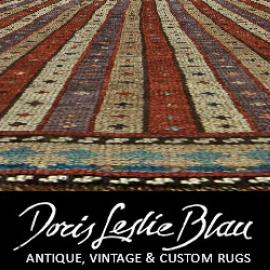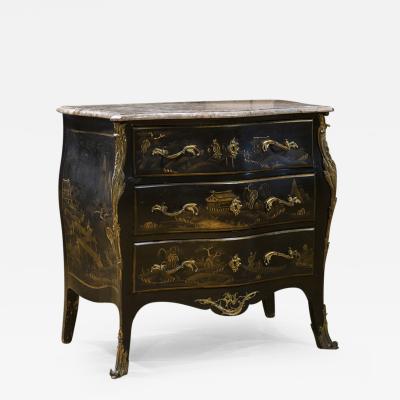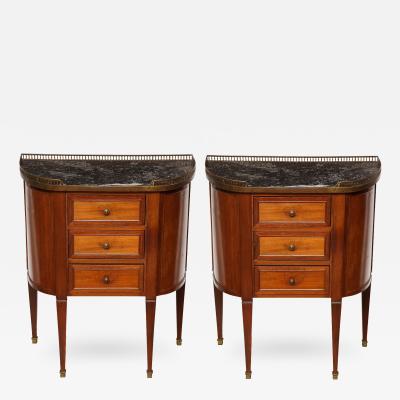Rich and Tasty: Exuberant Furniture from Vermont
This article was originally published in the Autumn 2015 issue of Antiques & Fine Art magazine.
Stylish, even exuberant in design, and employing highly figured native woods, the furniture of the Green Mountain State has been attracting decorative arts scholars and collectors for decades. Serious interest in this subject began with The Best the Country Affords: Vermont Furniture 1765–1850 organized in 1995 at the Shelburne Museums by colleagues at the Bennington Museum. “Vermont Cabinetmakers & Chairmakers Before 1855: A Checklist” published at the same time by Shelburne Museum was a revelation to many in the field as furniture in the northeast and Vermont in particular, was largely unidentified. Since then, Vermont historians and connoisseurs have brought to light additional signed and well-documented pieces now housed in public and private collections.
In the 1829 and 1839 Vermont Gazette, Bennington cabinetmakers Hastings Kendrick (b. 1804) and T. Crosset respectively announced their intention to manufacture a variety of “rich and tasty furniture…Secretaries, Sofas, Sideboards, Bureaus, Pier, Claw, Card, and other kinds of tables.” Astute independent craftsmen and entrepreneurs alike throughout the Green Mountain State did indeed create furniture that echoed this alluring yet quirky description. Forty examples of furniture made in towns such as Milton, Burlington, Middlebury, and Woodstock as well as a variety of unexpected forms from Franklin County in the north to Bennington County in the south are explored in Rich and Tasty: Vermont Furniture to 1850 at the Shelburne Museum. The exhibition augments popular understanding of Vermont high-style furniture by expanding on the surprising range of fashionable designs, urbane forms, and their influences—and suggesting why Vermont furniture “looks different.”
As the settlement of southeastern Vermont moved up the Connecticut River, so did the demand for timepieces. Clockmakers, such as Asahel Cheney (b. 1768) who trained in East Hartford, Connecticut, moved north to Vermont, to capture the emerging market. Cheney is first listed in Royalton in 1806; in 1809, he sold John Marshall property there in exchange for clock cases. From then until Cheney’s death in 1819, the clockmaker and the cabinetmaker’s lives were closely intertwined, as suggested by their collaboration on this tall case clock.
Although clearly Sheraton in style in the use of contrasting light cherry and dark mahogany veneers, reeded quarter columns, and geometric oval inlay centered on the door, this tall case clock shows John Marshall’s distinctive touches. Most striking are the four fully engaged columns with turned feet and finials that form the legs extending above the waist—an unusual treatment. The two inlaid Ionic columns in dark and light contrasting woods on the base with arch above—clearly a Masonic symbol representing Solomon’s temple that rarely appears in this material—is a customized design. The fact that Cheney was given a Masonic funeral after his sudden death in 1819 strongly suggests that the clockmaker had this case designed by his cabinetmaker colleague, John Marshall, specifically to house his own brass movement. As it may have been for personal use and not for sale, Cheney did not need to record his name on the dial. Presumably at some point after his burial in the North Royalton cemetery, his bespoke timepiece was returned to the cabinetmaker and has remained with Marshall descendants to this day.
The mahogany version of this sideboard currently at the Hood Museum of Art, Dartmouth College, originally belonged to Mills Olcott, the treasurer of the college from 1816 to 1822, who in 1801 exchanged goods and services with local cabinetmaker Julius Barnard, reinforcing the relationship between the two businessmen. In 1802 Barnard relocated his trade to Windsor, Vermont, where, in 1805, he advertised among other things, the sale of “sash-cornered, commode & straitfront [sic] Sideboards.” He relocated to Montreal, Canada, in 1809.
The elegant lines and sophisticated craftsmanship of this Hepplewhite sideboard demonstrate that its maker was attuned to the high-style furniture fashions emanating from larger urban centers. In the 1780s Barnard apprenticed with Eliphalet Chapin (1741–1807), who operated a large furniture shop in East Windsor, Connecticut. There, Barnard learned the Philadelphia style, and then traveled to New York City, an experience that introduced him to “the latest and most elegant patterns for Chairs and Cabinet Work.” The innovative arrangement of inlays on this piece, including the upside-down bellflowers and pendant icicles down the front legs, and the light and dark corner inlay fans, represent Barnard’s unique contribution to the rural cabinetmaking tradition in the Green Mountain State.
The lyre design was a popular component of the Greek Revival style of the 1820s and 1830s and is found in a variety of furniture forms including table supports and chair splats. Here, the maker incorporates the entire face and facade of a lyre clock in the arm supports of this sofa. The quality and quantity of the high relief carving on the legs and leg supports is exceptional, and its placement on front, back, and side surfaces suggests that this impressive seating unit was meant to hold court in the center of a parlor. The star-punched backgrounds, in particular, relate to Boston-area practice.
Existing receipts indicate that Parker purchased “St. Domingo Mahogany plank” from Boston and horsehair cloth from a New York supplier. In an 1829 advertisement in the National Standard, Parker announced that he had on hand “two Sofas, trimmed in elegant style.” Could this be one of them? Although it is unsigned, the sofa’s attribution to Parker is based on a combination of receipts, ads, and a related sofa at the Sheldon Museum in Middlebury; two others are known. Upholstered sofas requiring specialized skills were one of the most expensive furniture forms in New England households during the 1830s.
Fully developed Federal sideboards are not common in Vermont, although they were frequently advertised by cabinetmakers. Instead, a smaller modification of this form—combining a bureau with flanking bottle drawers—survives in many areas of the Green Mountain State. Stylistically, this refined hybrid that Vermont cabinetmakers in the 1830s advertised as either a half sideboard or locker, features a mixture of highly figured native woods combined with more expensive veneers. The blocked front and exuberantly spool-turned corner columns, combined with the vigorously scrolled apron, add to the cabinetmaker’s eccentric interpretations of this high-style piece. This half sideboard was made by Ebenezer Wheeler for Sarah Smith (1786–1866) on the occasion of her May 6, 1817, marriage to Reverend Isaac B. Bucklen (1794–1875), whose name is inked on the backboards. Little is known about Ebenezer Wheeler, who appears in the 1820 census for Rockingham, as engaged in “Manufactures.” Only one other piece of his is known—a signed four-drawer bureau with shaped skirt and similar splashboard, marked “Saxtons River” and dated 1819.

- Sideboard/bookcase, Oramel Partridge (1799–1868), Randolph, Vt., 1829. Inscription in black ink on proper right side of long drawer: “Bought from Oramel Partr/idge/in the year 1829 by/Aaron Storrs.” Flame birch, mahogany veneer, basswood, and eastern white pine. H. 76, W. 43, D. 22¼ inches. Collection of Ethan Merrill.
This unusual form, combining a glazed-door secretary placed on top of a half sideboard, may be the realization of what one Vermont cabinetmaker advertised in 1810 as a “secretary with side-board front.” Massive in size and masterful in execution, this faux frame-and-panel sideboard containing bottle drawers on the bottom and glazed bookcase above would have held a commanding presence in a wealthy client’s home.
The bold effect of Oramel Partridge’s sideboard/bookcase relies on carved and turned elements found on the fully round Ionic columns combining leaf and pineapple motifs, and substantial hairy claw feet with toenails. The complex cornice is fitted with a whale’s tail scroll board reminiscent of Connecticut work, but the plinths and corner blocks are not drilled for finials. The absence of any functional hardware or decorative brass is surprising considering the probable cost for materials and craftsmanship, but may, instead, reflect availability issues. The maker, Oramel Partridge, born in Norwich, Vermont, learned his trade from Isaac Reed in Randolph, where he opened a cabinetmaking shop in 1822 and where he remained his entire life. This sideboard/bookcase represents his only known surviving work. It was commissioned by Aaron Storrs, who was a charter member of the town of Randolph, Vermont, in 1781, and silently proclaims his status in the community.
A note accompanying this unusual desk is inscribed “Made by Alonzo Stowe, Books painted by Truman Town.” The creator may be Alonzo Stowell (1828–98), with the last two letters abraded. He probably learned his cabinetmaking skills from his father, Horace Stowell (1803–1878), a resident of Londonderry from 1818 until his death. Horace’s successful entrepreneurial activities are recorded in the 1860 industrial census, where H. Stowell & Son are listed as cabinetmakers with an annual production of twelve bureaus, thirty tables and stands, and other articles.
The connection between Truman Town, occupation unknown, in northwestern Washington County, Vermont, and the cabinetmaker based in Londonderry, in the southwest of Vermont, suggests the travels of an itinerant house sign and fancy painter. The totally unexpected feature on this table, with hinged leaf and turned legs ending in peg feet, is the unique superstructure featuring carved and painted trompe l’oeil book form drawer fronts. The painted title on the spine of one volume is T. S. Arthur’s True Riches, published in 1852. Based purely on visual evidence, which is aligned with an earlier aesthetic, it is surprising this table was produced as late as mid-century.
The furniture associated with Shaftsbury is as famous as any made in Vermont for its use of ornamental paint to simulate vibrant hardwood veneers. High-style urban furniture was skillfully imitated in both urban and rural areas using more readily available and affordable materials to reach a broader clientele. Itinerant ornamental painters in Vermont and northern New England plied their trade in pine, with paint on furniture, architecture, and signage to create realistically grained exotic hardwoods in the latest fashion. The fancifully grained oval-shaped front panel on this chest is surrounded by a band of solid red that is repeated on the sides. Both the lid and the back iterate the oval motif, which is surrounded by a realistic tiger-maple grained border, on all five visible surfaces, suggesting the chest was not intended to be placed against a wall as was customary. The handwritten, period inscription on the bottom is a shipping label to Ebenezer Harwood, a customer in Hartford, Connecticut, confirming that these faux-grained containers traveled beyond Vermont and likely were influential to other craftsmen.
Bureaus made by the Loomis brothers of Shaftsbury—Asa (1793–1868), Daniel (1798–1833), and Russell (1799–1854)—are linked in both proportion and construction to urban furniture labeled by Richard Allison (1780–1825), who worked in New York City. One of the brothers might have worked with Allison before returning to Vermont, or perhaps someone from Allison’s shop moved to the Green Mountain State? The influence of the Allison brothers (Michael and Richard) on the New York-style design and execution of case furniture made in Shaftsbury, within the watershed of the Hudson River in southwestern Vermont, exemplifies how connections sometimes begin with the physical evidence of artifacts.
Nathan Burnell began his long career between 1811 and 1819 in Swanton, before moving to nearby Milton, where he remained for the rest of his life. His leather-bound ledger of 1822 to 1866 lists all customers alphabetically in an index at the front of the 217-page volume and provides a running account of each client’s purchases and payment in money, goods, or services. Burnell’s output was prolific and included sixty-seven “Beauro’s,” ranging in price from $15 to $28, recorded along the left side of the ledger. Other high-value items listed were nine secretaries for $25 each and three commodes at $40 each. Surprisingly, no work tables or stands are recorded in the entire inventory. Aside from the commodes, the single most expensive item in his account book, recorded on February 4, 1853, was a “Chamber Sett” for Daniel H. Onion (a regular customer from 1852 to 1862) for $35. Could this two-drawer table be part of that set? Though classically-inspired in design, the date in the account book corresponds to the date on the table.
Rich and Tasty: Vermont Furniture to 1850, organized by Shelburne Museum, is on view at the museum’s Pizzagalli Center for Art & Education (July 25 to November 1, 2015). The catalogue features photographs by David Bohl, with introductory essays by Burks and Philip Zea, president of Historic Deerfield.
Jean M. Burks is curator emerita, Shelburne Museum, Shelburne, Vermont.
This article was originally published in the Autumn 2015 issue of Antiques & Fine Art magazine, a digitized version of which is available on afamag.com. Antiques & Fine Art and AFAmag are affiliated with InCollect.com.


















































